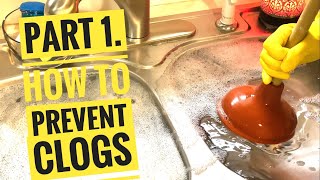Most homes come equipped with simple downspouts and splash blocks, at
the base of the downspout, to redirect rain water. Often, this is not
enough to keep water from entering basements and crawl spaces, eroding
soil under foundations, or damaging walls. Splash blocks often shift as a
result of water impact, reducing their effectiveness. Two methods for
moving water further away from the home is to dig a trench for an
underground drain, or to install retractable rollout or flexible
downspout extensions.
Underground Drains
While
underground drains are effective at moving water safely away from
structures, their cost alone makes them a less desirable choice. Also,
once they are installed, changing the discharge point means even more
work and expense.
Due to the variety of ordinances and codes for
different communities, it may be necessary to hire a professional to
install an underground drain. Some homeowners opt for installing a
French drain, which is a trench filled with gravel. Installing a 50′
drain means digging and disposing of approximately 75 cubic feet of
dirt, weighing 4 to 5 tons, and then adding 4 to 5 tons of gravel. Also,
the slope must be consistently downhill, or the drain will turn into a
mud pit, defeating the purpose of all that work.
Automatic Downspout Extensions
A
more affordable and convenient alternative are rollout downspout
extensions that are simply attached to an existing downspout, where they
stay neatly out of the way until it rains. At that point, they unroll
themselves, moving water 4′ to 9′ away from the structure and into
landscaping areas that can handle the extra water. When the rain stops,
they automatically roll themselves back up.
Cover More Ground With Flexible Downspout Extensions
While
not automatic, flexible downspout extensions provide similar
convenience with added distance and customization possibilities.
Flexible downspout extensions attach to gutters in the same way, but are
available in lengths of 25′ and 50′, making them the perfect tool for
moving rain water to thirsty hedge rows, trees, and shrubs, or to paved
areas, such as driveways or curbside. These flexible gutter extensions
can go around corners and vulnerable landscaping, making it easy to
customize where the water is discharged.
Moving rain water away
from structures and vulnerable landscaping is important in protecting
the structural integrity of your home and the health of your family.
After considering the cost, labor, and flexibility to both options , it
, it
is clear that aboveground gutter extensions provide a far more efficient
and cost-effective solution to potential water damage.
{bigcontentsearch|100|campaign}{bingnews|100|campaign}{indeed|100|campaign}How To Prevent A Clogged Kitchen Drain Without Chemicals (Part 1.) | 24 ROOTER
 In this video we share a couple tips from our professional plumbers on how to help prevent clogged drains in your kitchen sink before it clogs without using any chemicals or Drano like products.
In this video we share a couple tips from our professional plumbers on how to help prevent clogged drains in your kitchen sink before it clogs without using any chemicals or Drano like products.
We show you what will commonly cause kitchen drain clogs and a simple preventative maintenance tip of flushing your kitchen drain weekly on garbage day to help you remember to perform the maintenance routine.
This is part 1 of a series of clogged drain prevention tips.
Part 2 Here https://youtu.be/2QMQ04mK7Xw
#24rooter
